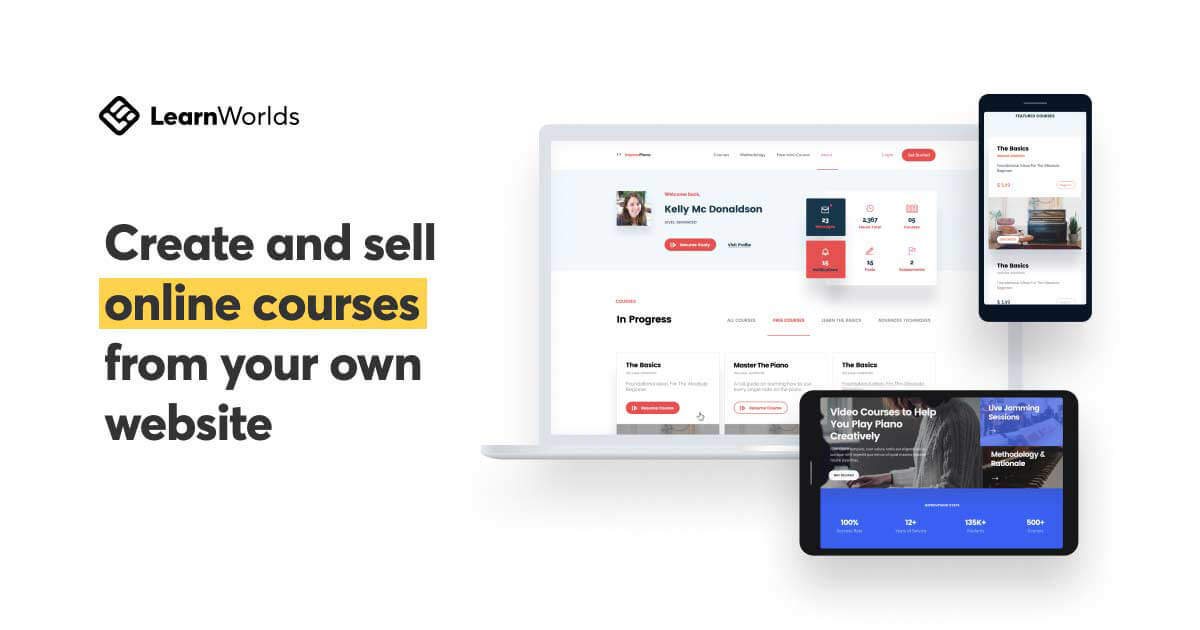Introduction
As online and blended learning continue to grow in popularity, choosing the right learning management system (LMS) has become a critical decision for education institutions and enterprises alike. An LMS serves as the technology backbone enabling the effective delivery of online courses, training programs and other digital learning content. In this review, we evaluate and compare 15 of the most popular LMS platforms based on functionality, ease of use, pricing and other factors to help you identify the best fit for your unique learning and training needs.
Methods of Evaluation
To evaluate and rank the top LMS platforms, we considered several key criteria including core feature set, customization options, multi-device support, analytics and reporting, pricing tiers, client reviews and customer success stories. Beyond conventional evaluation methods, we also analyzed online metrics like number of backlinks, traffic and keyword search trends to understand the relative market popularity and mindshare of each vendor. This holistic approach helps provide a well-rounded assessment of the strengths and potential of different LMS options.
1. Adobe Captivate
Adobe Captivate is a leading learning authoring tool and LMS software that allows users to create interactive eLearning content. Originally released in 1997 as Captivate, Adobe acquired the software in 2005 and has continued to enhance it over the years.
Pros: Some key advantages of Adobe Captivate include: drag-and-drop module builder for quick authoring, robust toolset for interactions/quizzes, built-in publishing to LMS/authoring/tracking, integrations with Adobe tools like Premiere/Photoshop for reuse of assets.
Cons: A potential disadvantage is that Captivate has a learning curve for more advanced features and requires additional training/experience to master authoring.
Pricing: Adobe Captivate has 5 pricing tiers starting from $299 for individuals up to enterprise plans. It is sold via annual subscriptions with discounts for educational institutions and non-profits.
Some key stats about Adobe Captivate include: used by over 90,000 companies worldwide, supports all major LMS with SCORM/xAPI integration, over 15 million learners access Captivate courses each year.
2. Slate
Slate is a learning management system (LMS) designed to meet the modern needs of learners. It provides a personalized learning experience through home feeds and paths that are tailored for each individual user. Slate focuses on blending discussions, resources and the overall learner experience.
Pros: Some key advantages of Slate include:
– Personalized home feeds and paths for a customized learning experience
– Built-in tools for blended discussions, assessments and collaborations
– Robust reporting and analytics dashboards for instructors
Cons: One potential downside is that the free version has limited features compared to the paid tiers, which may not meet the needs of large organizations.
Pricing: Slate offers both free and paid plans. The free plan provides basic functionality. Paid plans start at $3 per user/month for the Team plan and scale up to the Campus plan tailored for universities and colleges.
Some key stats about Slate include:
– Used by over 500 colleges and universities worldwide
– Supports over 10 million learners
– Delivers over 1 billion learning resources to users each year
3. Coursera for Campus
Coursera for Campus is an online learning platform developed by Coursera that allows higher education institutions to offer massive open online courses (MOOCs) and other online content to students. Universities and colleges can integrate Coursera courses and content into their existing learning management systems (LMS) to enhance and supplement on-campus instruction.
Pros: Some key advantages of Coursera for Campus include:
– Access to thousands of high-quality online courses across different subjects
– Simple integration with supported LMS platforms like Canvas and Blackboard
– Allows schools to supplement existing on-campus teaching with virtual immersive learning
– Coursera courses are interactive and engage students with peer-to-peer learning
Cons: One potential disadvantage is that not all Coursera courses are free – some may require a subscription fee depending on the school’s agreement with Coursera.
Pricing: Coursera for Campus pricing varies depending on the partnership agreement with each school. Overall, Coursera offers flexible pricing models like pay-per-enrollment or annual subscriptions to provide institutions access to the Coursera catalog and integration features.
Some key stats about Coursera for Campus include:
– Over 6,000 courses from 200+ leading university and industry partners
– Used by over 3,500 college and university partners worldwide
– Over 125 million users have registered on the Coursera platform
4. Moodle
Moodle is an open-source learning management system (LMS) that was created to provide educators, administrators and learners with a single robust, secure and integrated system to create personalized learning environments. Initially started as a PhD project in Australia, Moodle has grown to be one of the most widely used LMS in the world with over 200 million users worldwide.
Pros: Some key advantages of Moodle include:
– Highly customizable and modular platform that can be adapted for any educational need.
– Large active community for customization, integration, and support.
– Robust feature set including assignments, quizzes, grading, messaging and more.
– Mobile responsive design ensures an engaging experience on all devices.
– Open-source and free to use with no licensing fees.
Cons: One potential disadvantage of Moodle is that as an open-source platform, it does not provide the same level of commercial support as paid LMS alternatives. While the community is large, response time for support may vary compared to vendor support teams.
Pricing: Moodle is open-source software released under the GNU Public License. It can be downloaded and installed freely on any web server. While free to use, some hosting and support services may charge monthly or yearly subscription fees depending on requirements and features needed.
Some key stats about Moodle include:
– Used by over 200 million users worldwide in over 235 countries.
– Over 9000 registered installations of Moodle.
– Available in over 110 different languages.
– Committed open-source developer community with over 20 million lines of code.
5. Instructure Canvas
Instructure Canvas is an online learning management system (LMS) developed by Instructure. First launched in 2008, Canvas is a very popular choice for schools and universities worldwide with over 250 million users. It aims to provide a robust yet easy to use platform for teachers, students and institutions of all sizes.
Pros: Some key advantages of Instructure Canvas include:
– Robust features for online, blended and flipped learning
– Highly customizable and extensible via community plugins
– Excellent mobile apps for iOS and Android
– Great analytics and assessment creation tools
Cons: One potential disadvantage is that the free open-source Canvas Community version has fewer features than the commercial editions, limiting customization options for some.
Pricing: Instructure Canvas pricing starts at $7 per user per year for the Campus plan for institutions. Premium Campus and Ultimate plans offer additional features and support options, priced at $12 and $18 per user per year respectively.
Some key stats about Instructure Canvas include:
– Used by more than 4,500 institutions globally
– Supports over 250 million users
– Available in over 70 languages
– Over 15 million courses created on Canvas to date
6. Thinkific
Thinkific is an all-in-one online course creation and sales platform that allows entrepreneurs and businesses to create, market, and sell online courses and membership sites. Founded in 2012 and headquartered in Ottawa, Canada, Thinkific provides a powerful yet easy-to-use course builder and features to help businesses succeed with online learning.
Pros: Some key advantages of Thinkific include:
– Designed specifically for entrepreneurs to create and sell online courses easily
– All-in-one platform that handles course hosting, sales, payments, and student management
– Mobile-friendly course builder with drag-and-drop functionality for easy customization
– Robust membership and subscription tools to sell memberships or recurring content
– Affordable pricing plans to suit all budgets
Cons: One potential disadvantage is that the platform lacks some advanced capabilities for very large academic institutions or corporations in comparison to some competitors.
Pricing: Thinkific offers four pricing plans – Lite, Pro, Business and Enterprise. Pricing ranges from $29 to $299 per month based on the plan, with volume-based discounts available on the higher plans.
Some key stats about Thinkific include:
– Processes over $500 million in sales for its customers annually
– Has helped entrepreneurs earn over $1 billion in revenue
– Serves over 50,000 businesses and course creators in over 160 countries
7. Discovery Education
Discovery Education is one of the largest provider of online learning resources for K-12 schools. Founded in 1954, Discovery Education has evolved from a producer of educational television programs to become a leader in online and blended learning solutions. With its focus on blended learning, Discovery Education aims to inspire students and teachers through digital content, tools for instruction and teaching resources while aligning to academic standards.
Pros: Key advantages of Discovery Education include:
– Engaging digital resources that include videos, interactives, images and other multimedia to improve student engagement and outcomes.
– Tools and technology for teachers to personalize instruction based on student needs and strengths.
– Comprehensive professional development through both online and in-person training to help educators effectively integrate technology in the classroom.
Cons: One potential disadvantage is the cost as Discovery Education pricing is based on the number of students and teachers in a district. For very large districts, the annual subscription fees could be significant.
Pricing: Discovery Education offers flexible pricing models based on the number of students and educators in a district. Pricing generally ranges from $1-3 per student for annual access to the full library of digital content and resources.
Some key stats about Discovery Education include:
– Over 13 million educators, students, and parents use Discovery Education resources each month.
– Resources are aligned to academic standards in all 50 US states.
– Over 30,000 pieces of digital content covering subjects across science, social studies, math, language arts and career and technical education.
– Professional development provided to over 250,000 teachers each year.
8. TalentLMS
TalentLMS is a leading cloud-based learning management system (LMS) software for online learning and training. Founded in 2010 and based in Warsaw, Poland, TalentLMS helps over 7,000 customers in more than 150 countries move their training online. The TalentLMS platform offers a highly customizable and engaging learning experience both for desktop and mobile.
Pros: Key advantages of TalentLMS include:
– Intuitive and engaging responsive interface optimized for desktop and mobile
– Integrations with major HRIS/CMS platforms and single sign-on for a unified user experience
– Highly customizable workflows with approval functionality to manage online courses
– Personalized learning paths and recommendations to improve engagement
Cons: Potential disadvantages could include:
– Pricing may be higher than some open-source or self-hosted LMS options for very small businesses or organizations
Pricing: TalentLMS offers flexible pricing plans starting from $49/month for the Essentials plan up to customized enterprise plans. All plans include core features like classroom training, compliance courses, learning paths, integrations and mobile responsiveness. Additional features are available in higher-tiered plans.
Some key stats about TalentLMS include:
– Serving over 7,000 customers globally across 150+ countries
– Hosting over 100 million users on the platform
– Award-winning interface focused on personalization and responsiveness
9. Sap SuccessFactors Learning
SAP SuccessFactors Learning is a learning management system (LMS) created by SAP SuccessFactors, a leading provider of cloud-based HCM software. As part of the larger SAP SuccessFactors suite, the learning platform integrates tightly with SuccessFactors’ talent management and HR systems to provide a complete human capital management solution.
Pros: Some key advantages of SAP SuccessFactors Learning include: being part of the larger SAP SuccessFactors product suite allows for tight integration with recruiting and HR systems; its social learning and community features enable peer-to-peer learning and knowledge sharing; and it provides personalized learner profiles that deliver a customized learning experience.
Cons: One potential disadvantage is that as an all-in-one HCM solution, SAP SuccessFactors Learning may have a higher total cost of ownership compared to best-of-breed or standalone LMS alternatives.
Pricing: Pricing for SAP SuccessFactors Learning varies based on the number of users, features, and modules required. However, in general pricing is available on both an annual subscription basis as well as a usage-based model calculated per active user per month.
Some key stats about SAP SuccessFactors Learning include: it supports over 5,000 customers globally across many industries; the platform offers learning content in over 50 languages; and it has strong social capabilities that enable communities, collaboration, and peer-to-peer learning.
10. Thred, Workplace by Facebook
Thred is a social learning and collaboration platform built on Workplace by Facebook. As a Facebook product, Thred leverages the parent company’s expertise in developing social networks and collaboration tools to create an engaging and intuitive learning management system (LMS).
Pros: Some key advantages of Thred include:
– Free metaverse virtual office space through Workplace Horizon which allows for interactive collaboration.
– Social learning features that encourage engagement through tools like live sessions, video lessons, and discussion boards.
– Hardware independent metaverse access through Workplace Horizon browser.
– Seamless integration of Workplace clients like desktop and mobile apps.
Cons: A potential disadvantage is Thred’s reliance on Facebook services and data policies which could be seen as invasive by some users.
Pricing: Thred offers various pricing tiers starting from a free Basic plan for unlimited users up to Premium team and enterprise plans with additional features. Pricing ranges from free to $8 per user per month for advanced features.
Some key stats about Thred include:
– Used by over 30 million people across various industries including education, healthcare, and manufacturing.
– Integrates with over 300 apps including Google Workspace, Salesforce, Microsoft Teams, and Zoom.
– Provides free collaboration space in the metaverse through Workplace Horizon.
– Available in over 190 countries worldwide with support in 50+ languages.
11. Canvas
Canvas is a learning management system developed by Instructure. It is one of the most widely used LMS platforms in education today with thousands of schools, colleges and universities relying on Canvas for course delivery and student engagement. The platform aims to make teaching and learning more interactive and accessible through an easy to use interface and rich feature set.
Pros: Key advantages of Canvas include:
– Widely adopted, robust and easy to use interface
– Great for both education and corporate training needs
– Rich feature set including assignments, quizzes, discussions and grading
– Mobile friendly apps for both instructors and students
Cons: One potential disadvantage is that as a more full-featured LMS, Canvas may be overkill for very small implementations or ad-hoc training needs where a simpler solution could suffice.
Pricing: Canvas offers both self-hosted and SaaS pricing models. For the SaaS version, pricing begins at $6 per concurrent user per year for the Basic plan up to $15 per user for the Premium plan with additional features and support.
Some key stats about Canvas include:
– Used by more than 250 million users globally
– Implemented at over 2,500 educational institutions
– Ranked #1 in the LMS category on Gartner’s higher ed review
12. Skillsoft
Skillsoft is a leading online learning and talent management solution provider offering a vast library of over 180,000 online courses, videos, and books covering topics in IT, business, leadership development, and compliance training. With over 30 years of experience, Skillsoft helps organizations develop their workforces through online training content and analytics to optimize learning strategies.
Pros: Some key advantages of Skillsoft include:
– Vast library of online courses and resources covering a wide range of topics
– Insights and analytics to help organizations optimize their learning strategies and track the impact of learning
– AI and machine learning capabilities to provide personalized recommendations to users
– Integrations with major HR platforms like Workday, SAP SuccessFactors, and ADP to bring learning into existing workflows
Cons: One potential disadvantage is that as a large vendor, the user interface and experience for learners and admins could feel a bit cluttered or outdated compared to newer, smaller competitors in the space.
Pricing: Skillsoft offers flexible subscription options starting at around $40 per user per month for all-access individual user licenses. Enterprise pricing is customizable based on needs but generally ranges from around $50,000 to $250,000+ per year depending on the number of users, content libraries, and additional premium features included.
Some key stats about Skillsoft include:
– Over 180,000 online courses, videos, and books available
– Content covers IT, business, leadership development, and compliance topics
– Serving organizations globally with customers in over 160 countries
– 30+ years of experience in the online learning and talent management space
13. LearnWorlds
LearnWorlds is a leading learning management system (LMS) software that allows users to create, sell and promote online courses. Founded in 2012 and based in San Francisco, LearnWorlds allows users to build 3D virtual worlds and simulations to create engaging and experiential online learning experiences.
Pros: Some of the key advantages of LearnWorlds include: Easy to set up immersive 3D virtual worlds. Highly customizable scenarios & workflows. Experiential learning & simulations. Good for compliance & soft skills training with its virtual world capabilities.
Cons: One potential disadvantage is the learning curve to set up complex 3D virtual worlds and scenarios. This may require some technical expertise compared to other more basic LMS alternatives.
Pricing: LearnWorlds offers a free basic plan as well as paid monthly and annual subscriptions starting from $29/month for individuals and $99/month for teams. Additional premium features like single sign-on, personalized domains etc. are available in higher pricing tiers.
Some key stats about LearnWorlds include: Used by over 20,000 schools, businesses and individuals globally. Hosts over 5 million courses and lessons. Integrations with over 50+ other edtech tools likepayment gateways, CRMs and more. Average course sales of $1500 per course on the platform.
14. D2L Brightspace
D2L Brightspace is an online learning platform developed by D2L for K-12 schools and higher education institutions. In use at schools and colleges worldwide, Brightspace provides a complete suite of tools to enable engaging digital learning experiences both inside and outside the classroom.
Pros: Key advantages of D2L Brightspace include:
– Built for educators with insights directly from schools and colleges
– Comprehensive tools that support online, blended and classroom learning
– Intuitive and engaging content authoring and distribution tools
– Adaptive learning capabilities that personalize the learning experience
Cons: One potential disadvantage is that as a more full-featured learning management solution, Brightspace may have a steeper learning curve compared to simpler LMS options.
Pricing: Pricing for D2L Brightspace is typically based on the number of enrolled students. There are customized quote requests available on the D2L website for institutions to get pricing specific to their needs.
Some key stats about D2L Brightspace include:
– Used by more than 12 million students at institutions in over 80 countries worldwide
– Over 1,000+ built-in tools and features for content creation, assessments, communication and more
– Backed by over 20 years of experience building education technology solutions
15. Docebo
Docebo is a learning management system (LMS) and learning experience platform (LXP) provider. Founded in 2005, Docebo provides a fully-featured, highly configurable platform to businesses of all sizes for managing employee and customer training programs. Some key facts about Docebo include that it serves over 2,300 clients globally across a wide range of industries and supports learning in over 100 languages.
Pros: Some key advantages of Docebo include: Feature-rich LMS and LXP built for enterprises, Engaging multi-modal content delivery capabilities including videos, documents, tests and more, Personalized learning paths and recommendations, Seamless mobile experience through responsive design and native mobile apps, Advanced analytics and reporting on learning effectiveness and ROI.
Cons: One potential disadvantage is that as an enterprise-focused platform, Docebo may have more capabilities than needed for some smaller businesses or those just getting started with an LMS. This could translate to a higher total cost of ownership than some other more basic LMS options.
Pricing: Docebo offers a range of paid plans and pricing models depending on organization size and needs. For large enterprises, pricing is available upon request. For mid-market customers, monthly rates start at around $100 per month for 25 seats.
Key stats about Docebo include: More than 2 million users, Supports organizations of all sizes from SMBs to enterprise, Supports learning in over 100 languages, Native mobile apps for iOS and Android with over 500,000 downloads, More than 90 integrated plugins and modules available.
Conclusion
With so many high-quality LMS platforms to choose from, selecting the right one depends highly on your specific requirements and goals. We hope this comprehensive overview and comparative analysis of the 15 leading solutions helps simplify and inform your evaluation process. All the featured LMS platforms are certainly worthy of consideration and a free trial can help you determine the best fit. With the right platform powering your online learning initiatives, you can create consistently engaging experiences that maximize learner impact and outcomes.
















